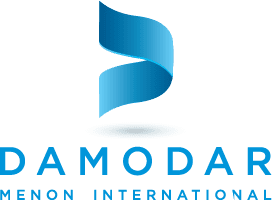Knits are the second most frequently constructed fabrics in the textile industry after woven fabrics. Knitted fabric manufacturers in India interlope one or more yarns in many series of interlinked loops using knitting needles to create knitted fabrics. It is much like how we traditionally knit sweaters or woolen clothes from a ball of yarn. The process is automated and sped up by installing large and powerful manufacturing machines with custom needles.
Depending upon the direction of the loop, knitted fabrics are categorized into two types: weft-knitted fabrics and warp-knitted fabrics. Knitted fabric manufacturers can produce a wide variety of fabrics by manipulating the stitch or loop, yarn density, and geometry.
Since knitted fabrics are looped, their maximum fiber fraction is lower than that of woven fabrics. However, they are more flexible, lightweight, durable, and stretchable and possess higher elasticity than braided and woven fabrics. The elasticity is derived by the number of loops per square inch. They also require less maintenance and care and can be produced much more quickly, affordably, and easily compared to woven fabrics. Straight yarns can also be integrated into the knitted loops to enhance stability and density.
Production Process of Knitted Fabrics
Knitted fabrics can be produced from a wide variety of yarns, including cotton, silk, wool, viscose, spandex, and polyester. Knitted fabric manufacturers follow the four main steps in producing the knits.
1. Fibers are Spun into Yarn
Fiber bales are the starting point. Cleaning might be necessary for natural fibers, whereas separating could suffice for synthetics. A picker tool plays a crucial role in cleaning and separating the fibers. For specific uses or needs, manufacturers have the option to blend different staple fibers, carefully measuring and maintaining the blend ratio for precision.
The fibers are then processed through a carding machine, which organizes and aligns them into a fine web. This web is then shaped into thin, hairlike strands.
Subsequently, these strands are refined through a comb-like tool, resulting in smoother, finer, and longer yarn. To further enhance its strength, this yarn is processed through a roving frame machine that adds twists.
Finally, the yarns are drawn into a spinning frame, where they undergo a series of rotations at increasingly higher speeds. This process rolls the yarns, which are then collected on bobbins. In this concluding spinning stage, drafting, twisting, and winding occur all at once.
2. Setting Up the Knitting Machine
The next step is selecting the knitting machine. Different types of knitting machines, from simple spools to complex electronic machines, are available in the market.
Based on the degrees of complexity, they produce different kinds of knitted fabrics, such as flat or tubular.
A knitted fabric manufacturer considers different parameters to select a suitable knitting machine. These criteria include machine gauge, cost, yarn size, patterning method, speed, capability, and finally, the type (weft vs. warp).
For instance, there are mid-gauge, standard-gauge, and chunky-gauge knitting machines, each having different mm-size needles.
If you aim to establish specific patterns, like creating lace, designs, or textures, you can choose a modern electronic knitting machine with in-built customizable design features.
You can also opt for manual, semi-automatic, and fully automatic knitting machines based on your budget.
3. Knitting the Yarn – Weft and Warp Knitting
Once the machine is selected, it is set up to implement specific designs. The production officer, who is also a skilled mechanical fitter, adjusts the necessary stitch length and the grey GSM to achieve the desired final GSM.
Warp Knitting
In the warp knitting technique, multiple yarns are introduced vertically into the machinery to form rows of loops along the fabric's length. This method yields a fabric that is closely knit and exhibits reduced elasticity. Each loop is interlinked with the next, row by row, resulting in a durable and sturdy textile.
Warp knitting produces a vertical pattern fabric, where each loop is created from separate lengthwise yarns. More elaborate fabrics can be produced with the warp knitting method. Example: Crochet.
Weft Knitting
Weft knitting stands as the predominant knitting method, where the fabric emerges through interlocking yarn loops horizontally. A single continuous yarn strand, known as a Weft, is fed into the knitting machine. These loops form in a zig-zag manner, diverging from the vertical alignment seen in Warp Knitting's Wales. This type of knitting can be executed on both circular and flat knitting machinery. Example: Sweater.
Types of Knitted Fabric that You Can Trade Through DMI
Types of knitted fabric available for trading include flat or jersey knit fabric, purl knit fabric, rib stitch knit, interlock stitch knit, double knit, warp, tricot knit, raschel, fleece, sliver, and knitted velour fabrics.
At Damodar Menon International Pvt Ltd (DMI), we stand out as a premier Textile Agent, Supplier, and Exporter of Knitted Fabric, including both warp and weft knits, on a global scale. Our commitment to quality and competitive pricing is at the heart of our core competencies. We cater to the needs of all major brands and welcome any sourcing requirements from global knitted fabric manufacturers.
Whether you are looking for antimicrobial knitted fabric manufacturers in India or are interested in special tri-blends or 100% polyester blends, now you buy, sell, export, and import knitted fabric across the globe through India’s largest and most reliable textile trading company’s official platform, TEXchange Global.
